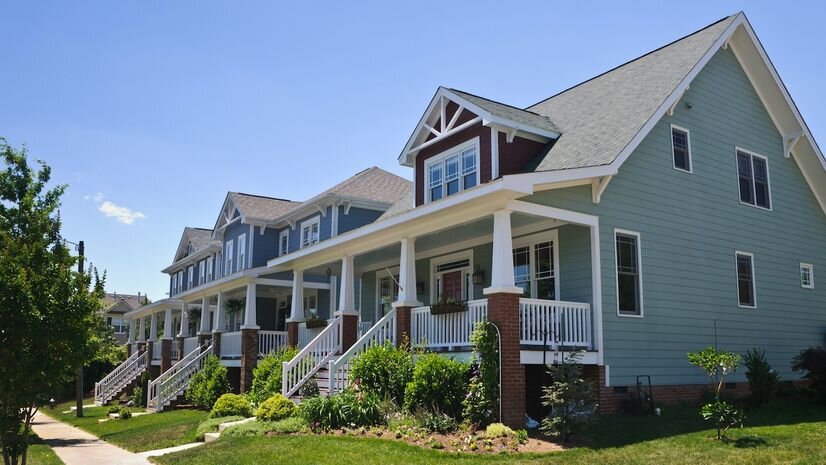
The numbers: Existing-home sales edged higher as the inventory of homes for sale grew, giving buyers some more breathing room in a tough market.
Existing-home sales rose 2% to a seasonally-adjusted, annual rate of 5.99 million in July, the National Association of Realtors said Monday. Compared with June 2020, home sales were up 1.5%.
Economists polled by MarketWatch had projected existing-home sales to come in at 5.83 million. The median sales price of an existing home was up 17.8% year-over-year at $359,900, but was below the record set the month prior.
What happened: Existing sales rose in three of the four regions nationally, with the Northeast being the lone region not to see a monthly increase. Still, sales remained even with June’s figures in the Northeast. The Midwest saw the largest gain from June, with a 3.8% uptick, followed by the West (up 3.3%) and the South (up 1.2%).
“Much of the home sales growth is still occurring in the upper-end markets, while the mid- to lower-tier areas aren’t seeing as much growth because there are still too few starter homes available,” said Lawrence Yun, chief economist at the National Association of Realtors, in the report.
Inventory did show signs of improvement in July. The total inventory of properties for sale at the end of July was 1.32 million units, up 7.3% from June.
In July, unsold inventory equated to a 2.6-month supply of homes. A six-month supply of homes is considered to be a balanced market.
Still, the situation buyers face is much more difficult than a year ago. In July, unsold inventory equated to a 2.6-month supply of homes, down from a 3.1-month supply a year earlier. A six-month supply of homes is generally considered to be a sign of a balanced market.
The big picture: While the inventory picture remains fairly grim, even the middling signs of improvement demonstrated in July represent a major source of relief to home buyers.
More homes on the market mean fewer bidding wars and less price pressure. “Already, the easing of the inventory squeeze has reduced the month-to-month pace of price gains,” Ian Shepherdson, chief economist at Pantheon Macroeconomics, said in a research note.
At the same time, Shepherdson argues that the surge in demand triggered by the pandemic has ended. The massive flood of buyers into the market last summer came at a time when the supply of homes for sale was already low — and made even lower by buyers staying on the sidelines. That drove prices higher very quickly.
But much of that surge in demand was in response to pandemic-related issues, such as a need for more space to work from home, and rock-bottom mortgage rates.
So long as the world continues to return to normal as vaccinations roll out, home sales should continue now at a pre-pandemic pace, many economists suggest, which would reduce the upward pressure on prices.
What they’re saying: “Although housing is expected to remain sturdy for some time, several key gauges are cooling as the pandemic-induced buying frenzy eases and elevated prices cut into affordability, particularly for first-time homebuyers,” Priscilla Thiagamoorthy, an economist with BMO Capital Markets, wrote in a research note.
“Despite the ongoing challenges of today’s housing market, including a limited number of homes on the market, lightning fast home sales and competition from investors with deep pockets, many buyers are finding ways to persist until they find and close on a home. At the same time, plenty of prospective buyers may be considering whether to pause rather than continue with their search,” said Danielle Hale, chief economist at Realtor.com.
